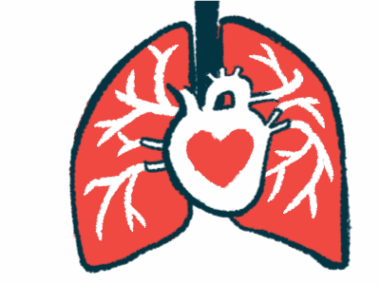Isolated cardiac sarcoidosis presents as ministrokes in case of woman, 54
Report: Consider condition for patients with few stroke risk factors
Written by |

A woman in her 50s in Florida who presented with recurrent ministrokes was eventually diagnosed with sarcoidosis only affecting the heart, called isolated cardiac sarcoidosis, a case study reports.
“This case highlights the need to consider [cardiac sarcoidosis] as a potential cause of [stroke-like] events in patients with few stroke risk factors but findings indicative of cardiac disease,” the researchers wrote, noting the woman’s symptoms “led to [the] identification of … characteristic imaging findings of [cardiac sarcoidosis].”
Their study, titled “Isolated cardiac sarcoidosis presenting as transient ischemic attack,” was published in the journal Clinical Case Reports. The team, from the University of Miami Miller School of Medicine, wrote that “the diagnosis of [isolated cardiac sarcoidosis] represents a true clinical challenge.”
Echocardiogram of the heart led to isolated cardiac sarcoidosis diagnosis
In sarcoidosis, an overactive immune system triggers the formation of granulomas, small clumps of inflammatory cells that can build up and damage organs, including the lungs, skin, and heart.
When granulomas affect the heart, it’s called cardiac sarcoidosis and can lead to irregular heartbeats and heart failure. Most people with cardiac sarcoidosis have granulomas in other body organs, but some patients have isolated cardiac sarcoidosis, in which the heart is the only organ affected.
In this report, the researchers described the case of a 54-year-old woman with isolated cardiac sarcoidosis who presented with recurrent transient ischemic attacks, known as TIAs, which are temporary blockages of blood flow to the brain. TIAs are often called ministrokes.
“To our knowledge, this is the first reported case of [isolated cardiac sarcoidosis] presenting as recurrent TIAs,” the researchers wrote.
The woman sought hospital treatment after experiencing a right-sided facial droop and incomprehensible speech. She had a past medical history of high blood pressure that was well controlled and the occasional premature ventricular contractions, a type of irregular (skipped) heartbeat.
While in the emergency room, her right facial paralysis improved, and her irregular heartbeat normalized within an hour.
To our knowledge, this is the first reported case of [isolated cardiac sarcoidosis] presenting as recurrent TIAs [or ministrokes].
This TIA was similar to an event that had occurred five years previously. Computed tomography (CT) and magnetic resonance imaging (MRI) scans of the brain found no evidence of impaired blood flow, blockages, bleeds, masses, or other issues.
However, an echocardiogram of the heart revealed several abnormalities, including a lower than normal left ventricular ejection fraction, or LVEF — a measure of how much blood is pumped out of the heart’s left ventricle with each contraction.
A heart MRI showed thinning areas of the left ventricle, the heart’s lower chamber, and abnormal heart wall movements. There also was evidence of a right-heart pseudoaneurysm, which is a rupture in the right ventricle wall. Positron emission tomography (PET) images indicated structurally abnormal areas within the heart muscle.
Based on these findings, a diagnosis of isolated cardiac sarcoidosis was considered. The woman was started on a corticosteroid and an immunosuppressant, as well as Humira (adalimumab). Given the results of the MRI scans and further heart monitor tests, she also received an implantable defibrillator, a device placed under the skin to regulate irregular heartbeats.
No recurrent episodes occurred for woman following treatment
At a three-month follow-up visit, there were no recurrent TIAs, but further echocardiogram scans showed the same heart wall motion abnormalities but with a stable LVEF. A new blood clot in the left ventricle was seen, for which she was started on anticoagulation therapy (blood thinners).
By six months, the blood clot was resolved, and LVEF improved mildly. Over the following year, the corticosteroids and immunosuppressants were stopped, but she continued with weekly Humira injections and anticoagulants.
A follow-up echocardiogram a year later showed stable findings of the known heart wall motion abnormalities and an unchanged LVEF. She had no recurrent episodes of heart or neurological events.
“Further clarification of the mechanisms underlying ischemic events and the development of therapeutic approaches aimed at addressing the causes of these events in this patient group are necessary,” the researchers concluded.






